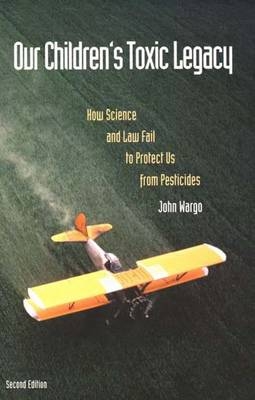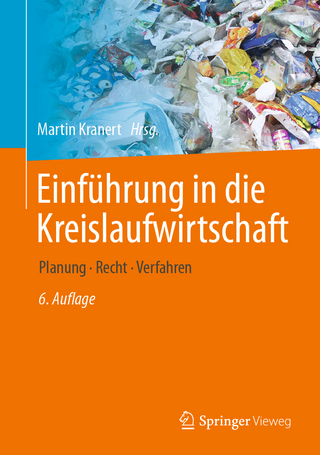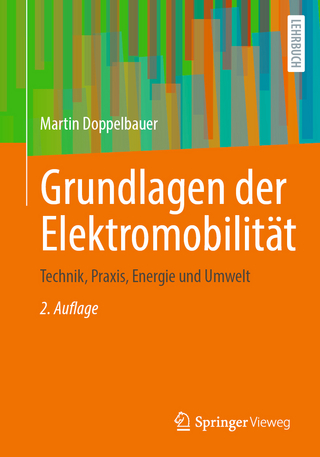
Our Children's Toxic Legacy
How Science and Law Fail to Protect Us from Pesticides
Seiten
1998
Yale University Press (Verlag)
978-0-300-07446-8 (ISBN)
Yale University Press (Verlag)
978-0-300-07446-8 (ISBN)
- Titel z.Zt. nicht lieferbar
- Versandkostenfrei innerhalb Deutschlands
- Auch auf Rechnung
- Verfügbarkeit in der Filiale vor Ort prüfen
- Artikel merken
This text traces the history of pesticide law and science and arrives at the conclusion that we have failed to protect ourselves, and especially our children, from pesticide contamination of food, soil, water and air. It suggests that more fundamental reforms are needed to contain the health risks.
During this century, hundreds of billions of pounds of pesticides have been released to the global environment. How are we exposed to them? What can we do to protect ourselves? In this extraordinary analysis, John Wargo, one of the nation's leading experts in pesticide policy, traces the history of pesticide law and science, with a focus on the special hazards faced by children.
By 1969, nearly 60,000 separate pesticide products were registered for use by the U.S. government, each with the expectation that pesticides could be used safely, that they quickly broke down into harmless substances, or that dangerous levels of exposure could be accurately predicted and somehow avoided. Faith in these assumptions was gradually eroded as experts grew to understand the persistence, movement, and toxicity of the chemicals involved. Nevertheless, government continues to hold the discretion to balance risks against economic benefits in its licensing decisions. The underlying legal strategy, Wargo claims, has been one that places extraordinary faith in government's ability to somehow ensure that only safe levels of contamination and exposure occur. And the effect has been systematic neglect of those exposures and risks faced by children.
Wargo presents a compelling case that children are more heavily exposed to some pesticides than adults and are especially vulnerable to some adverse effects. How should the fractured body of environmental law be repaired to manage the distribution of risk? This is the central question Wargo addresses as he suggests fundamental reforms of science and law necessary to understand and contain the health risks faced by children.
During this century, hundreds of billions of pounds of pesticides have been released to the global environment. How are we exposed to them? What can we do to protect ourselves? In this extraordinary analysis, John Wargo, one of the nation's leading experts in pesticide policy, traces the history of pesticide law and science, with a focus on the special hazards faced by children.
By 1969, nearly 60,000 separate pesticide products were registered for use by the U.S. government, each with the expectation that pesticides could be used safely, that they quickly broke down into harmless substances, or that dangerous levels of exposure could be accurately predicted and somehow avoided. Faith in these assumptions was gradually eroded as experts grew to understand the persistence, movement, and toxicity of the chemicals involved. Nevertheless, government continues to hold the discretion to balance risks against economic benefits in its licensing decisions. The underlying legal strategy, Wargo claims, has been one that places extraordinary faith in government's ability to somehow ensure that only safe levels of contamination and exposure occur. And the effect has been systematic neglect of those exposures and risks faced by children.
Wargo presents a compelling case that children are more heavily exposed to some pesticides than adults and are especially vulnerable to some adverse effects. How should the fractured body of environmental law be repaired to manage the distribution of risk? This is the central question Wargo addresses as he suggests fundamental reforms of science and law necessary to understand and contain the health risks faced by children.
| Erscheint lt. Verlag | 21.5.1998 |
|---|---|
| Zusatzinfo | 32 b-w illus. |
| Sprache | englisch |
| Maße | 152 x 229 mm |
| Gewicht | 590 g |
| Themenwelt | Naturwissenschaften ► Biologie ► Ökologie / Naturschutz |
| Recht / Steuern ► EU / Internationales Recht | |
| Recht / Steuern ► Öffentliches Recht ► Umweltrecht | |
| Recht / Steuern ► Privatrecht / Bürgerliches Recht ► Sachenrecht | |
| Sozialwissenschaften ► Politik / Verwaltung ► Staat / Verwaltung | |
| Weitere Fachgebiete ► Land- / Forstwirtschaft / Fischerei | |
| ISBN-10 | 0-300-07446-8 / 0300074468 |
| ISBN-13 | 978-0-300-07446-8 / 9780300074468 |
| Zustand | Neuware |
| Informationen gemäß Produktsicherheitsverordnung (GPSR) | |
| Haben Sie eine Frage zum Produkt? |
Mehr entdecken
aus dem Bereich
aus dem Bereich
Planung · Recht · Verfahren
Buch | Hardcover (2024)
Springer Vieweg (Verlag)
64,99 €
Technik, Praxis, Energie und Umwelt
Buch | Softcover (2025)
Springer Fachmedien Wiesbaden GmbH (Verlag)
44,99 €


